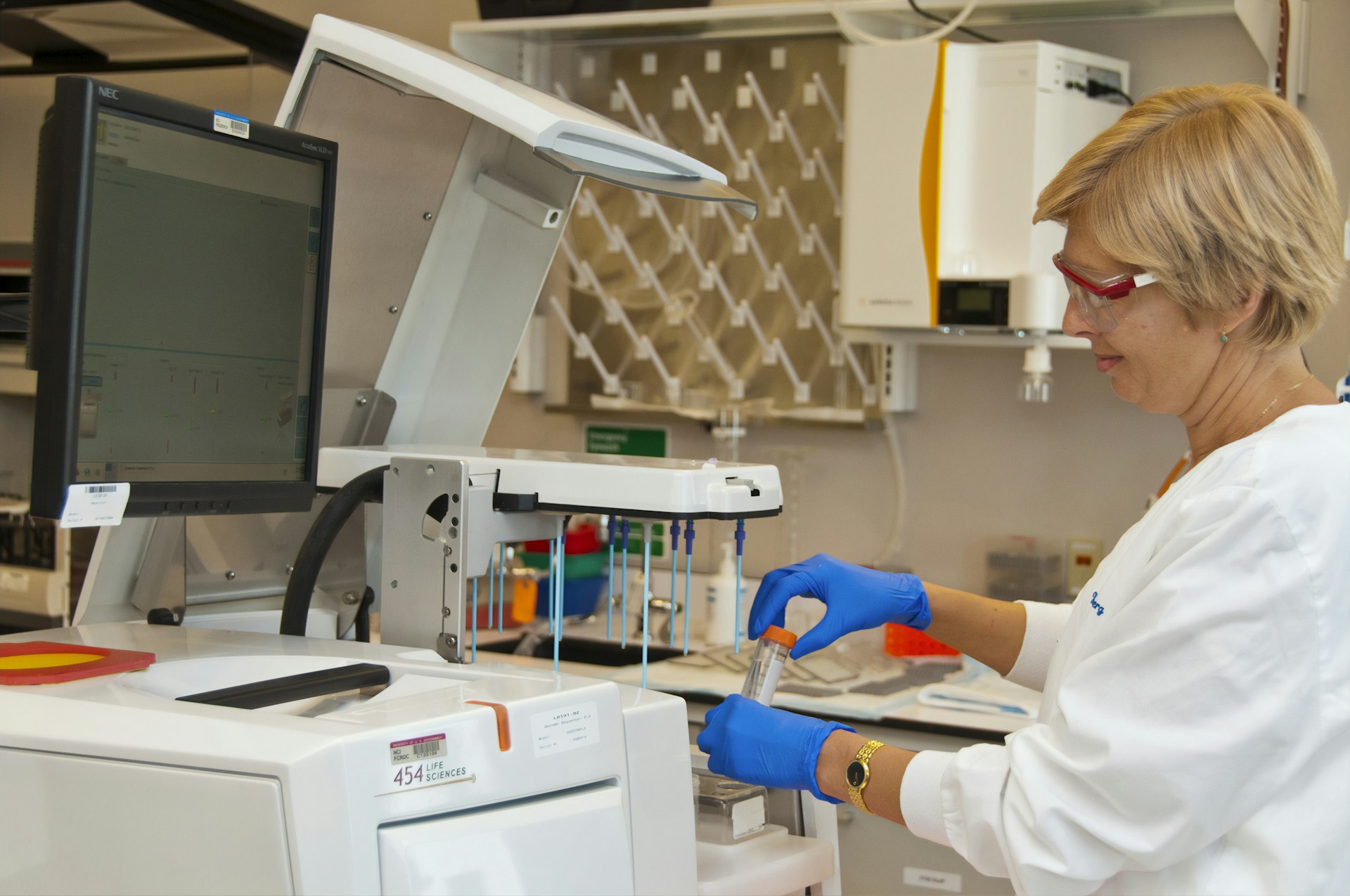CRISPR Gene Editing: Transforming the Future of Medical Treatments

Photo by JESHOOTS.COM on Unsplash
Introduction: The Dawn of Gene-Editing Therapies
In recent years, CRISPR (Clustered Regularly Interspaced Short Palindromic Repeats) has emerged as a transformative force in medical science. This gene-editing technology, first discovered in bacteria, now offers the ability to precisely alter DNA within living organisms. In the medical field, CRISPR’s potential is being realized through a surge of clinical trials, regulatory approvals, and personalized treatment breakthroughs, signaling a new era for patients with previously untreatable conditions.
[1]
CRISPR in Clinical Trials: Progress and Milestones
As of 2025, over 150 active clinical trials are using gene-editing technologies, including CRISPR, to develop therapies for a wide range of diseases. These trials cover blood cancers, hemoglobinopathies (such as sickle cell disease and beta thalassemia), solid tumors, viral diseases, metabolic disorders, autoimmune conditions, inherited eye diseases, and more.
[3]
The approval of the first CRISPR-based therapy, Casgevy, for sickle cell disease and transfusion-dependent beta thalassemia, marked a pivotal moment for the field. Following this approval, treatment sites have opened across North America, the EU, and the Middle East, making gene-editing therapies accessible to a broader patient population.
[1]
Personalized CRISPR Therapies: Real-World Breakthroughs
One of the most compelling advancements is the development of personalized, on-demand CRISPR therapies. In 2025, a team of researchers delivered a bespoke in vivo CRISPR treatment to an infant with a rare genetic disorder, achieving this milestone in less than six months from design to administration.
[1]
Another landmark case involved a child treated at the Children’s Hospital of Philadelphia, who received a custom CRISPR gene-editing therapy tailored to his unique genetic mutation. Early results show improvements in protein tolerance and reduced medication needs, with no severe side effects reported in the initial months.
[5]
These examples highlight CRISPR’s capability to address rare genetic diseases that previously had no viable treatment options. As more academic and industry investigators adopt these personalized approaches, the potential to replicate and scale bespoke therapies for various conditions increases.
CRISPR in Cancer and Complex Diseases
Beyond rare diseases, CRISPR is rapidly advancing in cancer therapy. Companies like CRISPR Therapeutics are running trials with allogeneic (donor-derived) CRISPR-modified CAR-T cells to target blood cancers such as leukemia and lymphoma, as well as solid tumors like renal cell carcinoma.
[2]
These engineered cells are designed to be more persistent and less likely to cause immune complications such as graft-versus-host disease. Newer generations of CAR-T cell therapies are being enhanced with multiple CRISPR edits to improve safety, durability, and efficacy, even in patients with high tumor burdens.
CRISPR is also being explored for the treatment of HIV, autoimmune disorders, and metabolic conditions, with research focusing on editing genes that contribute to disease susceptibility or progression.
[3]
Additionally, innovative platforms are expanding CRISPR’s utility, such as systems that allow for precise microbiome editing to neutralize bacterial toxins or modulate immune responses.
[4]
How Patients Can Access CRISPR-Based Treatments
Access to CRISPR therapies is growing but remains limited by ongoing clinical trials, regulatory processes, and reimbursement challenges. Here are actionable steps for interested patients and families:
- Consult with your primary care provider or specialist about eligibility for gene-editing clinical trials. They can refer you to trial registries and help assess your suitability.
- Search reputable clinical trial registries such as ClinicalTrials.gov (operated by the U.S. National Library of Medicine). Use search terms like “CRISPR gene editing,” “sickle cell,” “beta thalassemia,” or your specific condition to identify ongoing studies.
- Contact major academic medical centers and hospitals, many of which have active gene-editing research programs. Ask about compassionate use protocols or expanded access options.
- Stay updated by subscribing to newsletters from organizations such as the Innovative Genomics Institute and CRISPR Medicine News for the latest breakthroughs and opportunities.
- If your condition is rare, consider reaching out to patient advocacy groups focused on genetic diseases. They often have partnerships with research institutions and can guide you through the application process for trials.
- For information about insurance coverage or government reimbursement programs for new gene therapies, consult your state Medicaid office or your country’s national health system. Policies may change as more therapies receive regulatory approval.
It is important to note that most CRISPR-based therapies are still in the trial phase. While some, like Casgevy, are now approved in specific regions, broader access will depend on ongoing research, regulatory decisions, and successful demonstration of safety and efficacy.
Technical Innovations and Future Directions
Advances in CRISPR technology continue to expand its medical applications. Recent innovations include:
-
Single-cell CRISPR platforms
that enable researchers to directly link specific genetic edits with functional changes in individual cells. These systems help map the genetic basis of complex diseases and improve therapeutic targeting.
[4]
- Gene-editing systems for the microbiome , allowing precise modification of gut bacteria to neutralize toxins or deliver therapeutic proteins. This holds promise for treating infections and metabolic disorders.
- Base editing and prime editing tools that offer greater precision and fewer off-target effects than traditional CRISPR-Cas9, potentially reducing the risk of unintended mutations.
These technical advances are accompanied by ongoing efforts to streamline regulatory approval and manufacturing processes. The development of rapid, scalable platforms for designing and producing personalized therapies is moving forward, with the hope of making gene editing more accessible and affordable for a wider range of conditions.
[1]
Challenges and Considerations
Despite rapid progress, several challenges remain. The cost of CRISPR therapies is significant, with some procedures running into the hundreds of thousands of dollars. Reimbursement and insurance coverage are still evolving, and equitable access to gene-editing treatments is a major concern.
[1]
Long-term safety and efficacy must be established through extended follow-up in clinical trials. Potential risks include off-target genetic changes, immune reactions, and the need for lifelong monitoring. Regulatory agencies in the U.S., Europe, and elsewhere are developing frameworks to address these issues, but ongoing vigilance is required.
Patients and families considering participation in CRISPR trials should discuss the risks and benefits in detail with their medical team and review available resources from official agencies and reputable advocacy groups.
Alternative Approaches and Future Perspectives
For patients unable to access CRISPR therapies, alternative options may include traditional gene therapy, bone marrow transplantation (for blood disorders), or small-molecule drugs. Many of these alternatives are supported by established clinical guidelines and may be available through standard care or existing clinical trials.

Photo by Quang Tri NGUYEN on Unsplash
As CRISPR technologies mature, the field is expected to move toward broader, more affordable access. Innovations in delivery methods, such as nanoparticle or viral vector systems, could further improve the safety and reach of gene editing. The ultimate goal is to provide durable, potentially curative solutions for a wide range of diseases, fundamentally changing the landscape of medical treatment.
Key Takeaways
The future of CRISPR in medical treatments is bright, with real-world examples already demonstrating transformative impacts for patients. Continued research, regulatory evolution, and collaboration between academia, industry, and patient communities are vital to realizing the full promise of gene-editing therapies. Those interested in accessing or learning more about CRISPR-based treatments are encouraged to consult with medical professionals, search reputable clinical trial registries, and engage with advocacy organizations for up-to-date guidance and support.
References
- [1] Innovative Genomics Institute (2025). CRISPR Clinical Trials: A 2025 Update.
- [2] National Institutes of Health (2024). Advancing CRISPR genome editing into gene therapy clinical trials.
- [3] CRISPR Medicine News (2025). Overview CRISPR Clinical Trials 2025.
- [4] CRISPR Medicine News (2025). CMN Weekly (25 July 2025) – Your Weekly CRISPR Medicine News.
- [5] Children’s Hospital of Philadelphia (2025). World’s First Patient Treated with Personalized CRISPR Gene Editing Therapy.
MORE FROM cheerdeal.com













